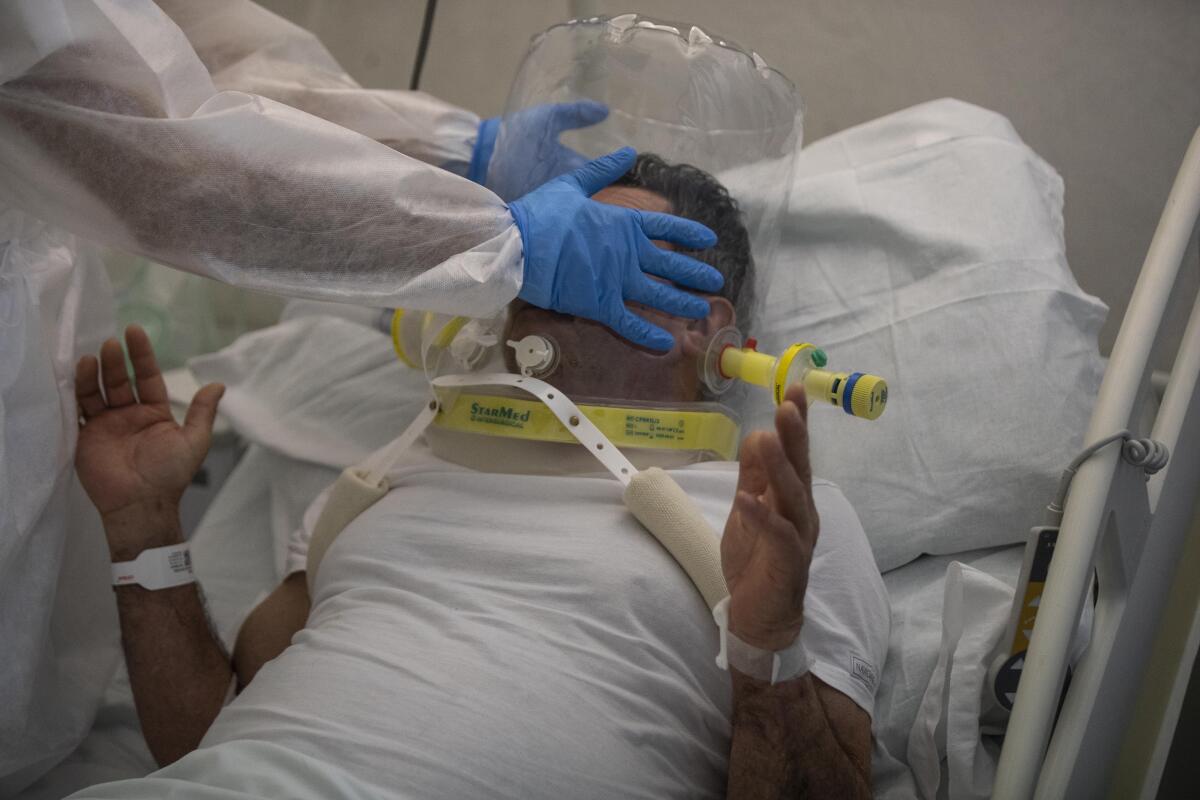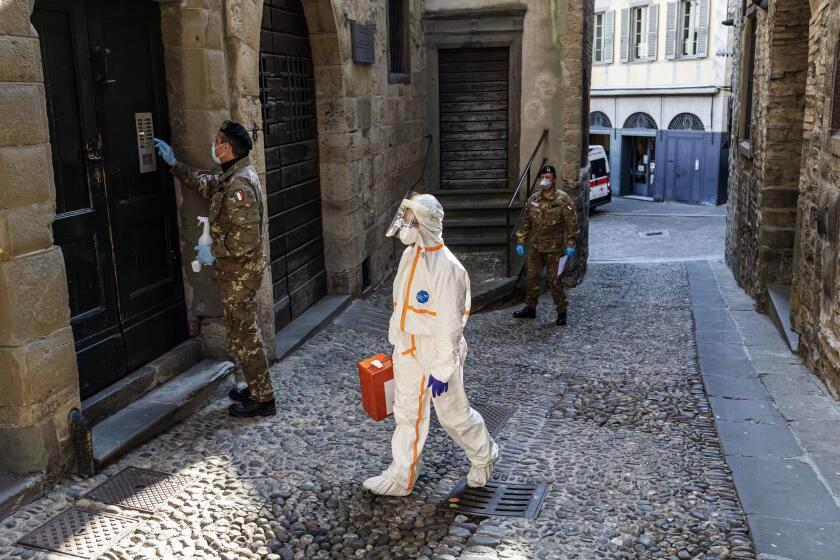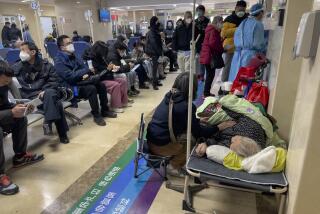Unwelcome deja-vu in northern Italy: A hospital is overrun with COVID-19 patients

CHIARI, Italy — The 160-bed hospital in the Po River Valley town of Chiari has no more room for patients stricken with the highly contagious variant of the coronavirus first identified in Britain, which has put hospitals in Italy’s northern Brescia province on high alert.
That history was repeating itself one year after Lombardy became the epicenter of Italy’s coronavirus crisis was a sickening realization for Dr. Gabriele Zanolini, who runs the COVID-19 ward in the Mellino Mellini Hospital in Chiara, a once-walled city that maintains its medieval circular street pattern.
“You know that there are patients in the emergency room, and you don’t know where to put them,” Zanolini said. “This for me is anguish, not to be able to respond to people who need to be treated. The most difficult moment is to find ourselves again in a state of emergency after so much time.”
The surge in variant-caused COVID-19 cases has filled 90% of hospital beds in Brescia, which borders both the Veneto and Emilia-Romagna regions. Italy crossed the grim threshold of 100,000 COVID-19 deaths Monday and on Wednesday will mark the one-year anniversary of its draconian coronavirus lockdown, the first in the West.
Whereas Zanolini was able to offer a safety valve to hard-hit Bergamo during last spring’s deadly surge, and to Milan and Varese in the fall, now he must ask hospitals elsewhere in the region to take COVID-19 patients he himself cannot admit.
New measures are again being considered in Rome to tamp down the increase in new cases attributed to coronavirus variants, including others identified in South Africa and Brazil. With the British variant prevalent in Italy and passing from schoolchildren and adolescents to their families, Lombardy has again put all schools on distance learning, as have several regions in the south, where the healthcare system is more fragile.
Air quality has been terrible for decades in Bergamo, in northern Italy, which last year suffered many COVID-19 deaths. Researchers see a connection.
In this surge, patients in the Chiari hospital’s COVID-19 ward are increasingly family members — husbands and wives, fathers and sons — Zanolini said. And unlike in previous spikes, the average age of COVID-19 patients has dropped, with many of the patients who need breathing aid between 45 and 55.
“We have seen, however, that they respond well to treatment,” Zanolini said of the younger patients, noting that mortality remains high among the elderly.
Despite months of renewed restrictions starting in October, Italy’s death toll remains stubbornly high — several hundred a day. Its overall tally is the second-highest in Europe after Britain.
Italy’s new prime minister, Mario Draghi, is focusing on vaccines to help the country emerge from the pandemic, pledging in a video message this week to intensify the campaign significantly in the coming weeks.
“Everyone must do his part to contain this spread of this virus,” Draghi said Tuesday. “But above all, the government must do its part. Rather, it must try to do more every day. The pandemic is not yet defeated.”
The vaccine is the only way out, Zanolini concurs. He sees all around him that people have grown weary of the restrictions and are growing relaxed — too relaxed — about gatherings, distancing and masks.
“We are worried because we don’t see an end. It seems like the tunnel is still very long,” Zanolini said. “We find ourselves hit by another wave, and we are very tired.”
More to Read
Sign up for Essential California
The most important California stories and recommendations in your inbox every morning.
You may occasionally receive promotional content from the Los Angeles Times.










